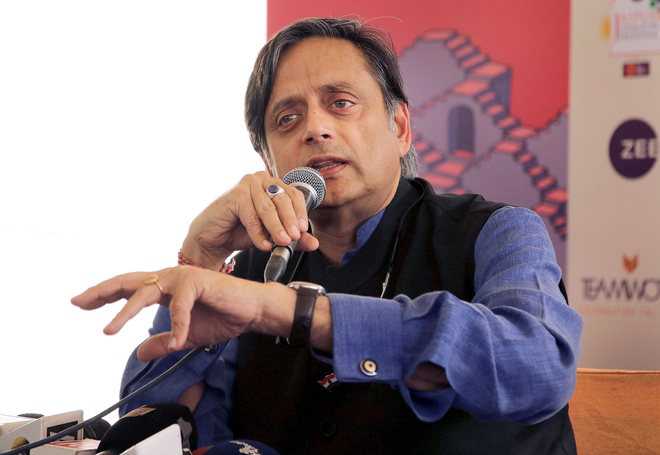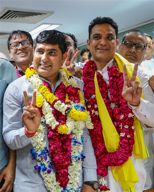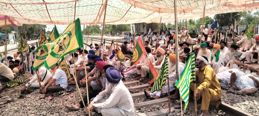
Changing with times: The book says Hinduism is an evolving religion
Ashok Vohra
Before one asks the question ‘Why I am a Hindu?’, one needs to answer the question ‘Who is a Hindu?’ Because of pervasive multiple practices and beliefs it is difficult, if not impossible, to answer the latter question.
According to Vishnupurana, a Hindu is one who lives in the geographical region called Bharata — the area which is to the north of the sea and extends up to the Himalayas. The Persians referred to it for the people living in the geographical region lying on the other side, that is, the Eastern side of the River Sindhu. Hindus themselves called their religion Sanatan Dharma or Vedic dharma.
A Hindu has no set practices or rituals or a specific God or a prescribed sacred book. It does not list dos and don’ts. Being essentially pantheistic, one can believe in any one of the plethora of gods and goddesses; so much so that one may not even believe in any God or supreme being, that is like the Carvakas, Mimamskas, Jains and Buddhists be an atheist, and yet be a Hindu.
One may be a vegetarian or non-vegetarian, or like an aghori be omnivorous, eating even human excreta, and still be a Hindu. There is no definite stipulated ritual in it. One may go to a temple for prayers once a day or week or month or year, twice or multiple times in a day, or never visit a temple. Likewise, one may keep a fast daily, once a week or fortnight, or on special occasions, or never keep a fast and yet be a Hindu. It is because of such an amorphous characteristic that defining Hinduism continues to be an enigma. Moreover, Hinduism is not a fossil, but an evolving religion. It adapts to the changing needs of the time.
While the import of almost all other religions can be gathered from an understanding of its scriptures and practices, “the key to understanding Hinduism is that it is one faith that claims no monopoly on the Truth. Hindus understand that theirs may not necessarily be the only path that leads to salvation; they are taught to respect all other paths that seek the truth, knowing that these will vary depending on the circumstances of each individual’s life, the culture in which they are born or live, their values and motivations” ( p. 32-33).
After explaining the central doctrine of Hinduism from the classical sources like the Vedas, the Upanishads and the Puranas, Buddhism and Jainism, the medieval philosophers like Adi Shankaracharya, Ramanuja, et al, Tharoor successfully tries to understand it from the explanations of modern thinkers like Raja Ram Mohan Roy, Swami Dayanand, Vivekananda and the contemporary scholars like S. Radhakrishnan, Narayana Guru, Ramana Maharshi, Sri Aurobindo and Mahatma Gandhi. Each one of them agrees that the quintessence of Hinduism is that it is “an inward directed faith, focusing on Self-realisation above all and the union of the (individual) soul with the Absolute” (p. 197).
In the section on Political Hinduism, Tharoor discusses the alternative interpretation of Hinduism as propounded by Savarkar, Golwalkar, and as explicated by Deen Dayal Upadhyaya. All of them believed in the supremacy and glory of ancient India — Bharat. They propounded the concept of nation state but censured the notion of territorial nationalism which confers ‘Indianhood’ on everyone living in the geographical region of India. According to them only those who belonged to ‘Hindutva’ a doctrine according to which inter alia those who belonged to a religion of Indian origin alone should be called Indians.
In addition, Golwalkar and Upadhyaya advocated re-writing of the Indian Constitution. They rejected the present ‘cumbersome Constitution’ which is based only on the Western concepts like ‘individualism, democracy, socialism, communism or capitalism’. It does not take into account the distinctive Indian ethos as stated in Manusmriti and other Indian classics. Tharoor leaves this discussion with the question: “Will constitutionalism tame Hindutva, or will Hindutva transform the working of the constitution?” (p. 188)
Criticising ‘Hindutva’ and ‘Hindutvavadis’, Tharoor as a practicing Hindu, rightly points out that as opposed to the essence of Hinduism, “Hindutva is an outward-directed concept, aimed at creating social and cultural distinctions for political purposes”.
After reading the book one wonders whether India shall continue to be pluralistic where, as the Kurma Purana (c. 500-800) says, ‘Women and men in . . . belong to many different classes, worship many different deities, and practice many different rites’ or rupture that tradition and follow the doctrine of Hindutva.
Tharoor’s book is a must read for everyone, especially in the contemporary times. Tharoor’s narrative is lucid, factual and direct; his arguments have the courage of conviction and demonstrate his vast knowledge of the Indian reality.



























